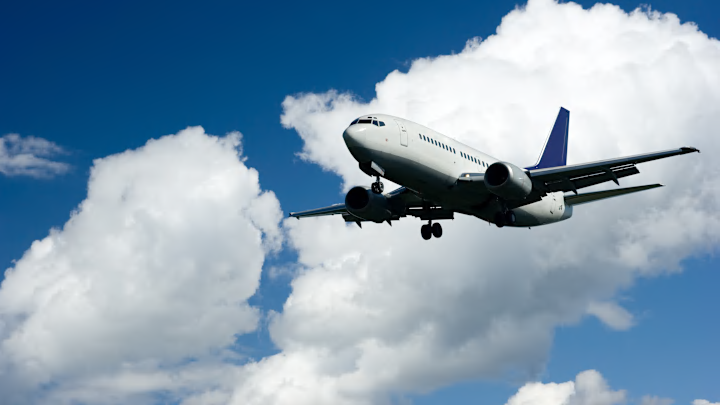If you’re flying from Nashville, Tennessee, to Raleigh, North Carolina, your chances of enduring a bumpy ride are higher than they would be on some other trip. As Travel + Leisure reports, that’s the most turbulent flight route in the U.S.
The conclusion was made by turbulence forecast platform turbli, which crunched the numbers on some 150,000 flight routes around the world to determine which ones tend to be consistently rocky. It based those determinations on historical forecasts—namely, turbulence forecasts from the National Oceanic and Atmospheric Administration’s Graphical Turbulence Guidance system, and thunderstorm forecasts from the UK’s Meteorological Office.
North Carolina has four flight routes in the top 10: three into Raleigh-Durham International Airport, and one out of Charlotte Douglas International Airport. So does New York: two from New York City and two to Syracuse.
Technically, the list covers all of North America, but the only non-U.S. airport to rank is Mexico’s Puerto Vallarta International Airport. The flight route from Denver to Puerto Vallarta is the third most turbulent on the continent.
Turbli ranked other continents’ flight routes, too. Europe’s most turbulent goes from Milan, Italy, to Geneva, Switzerland; Asia’s goes from Almaty, Kazakhstan, to Bishkek, Kyrgyzstan; and Africa’s goes from Cape Town, South Africa, to Durban, South Africa.
But the data definitely shouldn’t stop you from taking your dream vacation. As scary as it can be when you’re experiencing a bout of turbulence, it’s just a natural part of air travel caused by varying air currents and weather conditions. Planes are built to handle it, and pilots are trained to anticipate it.
See which other American flight routes made the top 10 below, and check out turbli’s full global rankings here.
- Nashville, Tennessee (BNA) to Raleigh/Durham, North Carolina (RDU)
- Charlotte, North Carolina (CLT) to Pittsburgh, Pennsylvania (PIT)
- Denver, Colorado (DEN) to Puerto Vallarta, Mexico (PVR)
- New York City, New York (JFK) to Raleigh/Durham, North Carolina (RDU)
- Warwick, Rhode Island (PVD) to Syracuse, New York (SYR)
- Atlanta, Georgia (ATL) to Dulles, Virginia (IAD)
- Pittsburgh, Pennsylvania (PIT) to Raleigh/Durham, North Carolina (RDU)
- New York City, New York (LGA) to Portland, Maine (PWM)
- Boston, Massachusetts (BOS) to Syracuse, New York (SYR)
- Boston, Massachusetts (BOS) to Philadelphia, Pennsylvania (PHL)
While turbulence can be scary to experience, the data above definitely should not stop you from taking your dream vacation. As frightening as it can be when you’re experiencing a bout of turbulence, it’s just a natural part of air travel caused by a variety of factors, from mountains to weather conditions to differences in wind speed. Airplanes are built to handle turbulence, and pilots are trained to anticipate it.
Still nervous? Just remember that it is almost impossible for normal turbulence to cause a crash, and even in-flight injuries are unlikely. “Passengers can easily prevent injuries from unexpected turbulence by keeping their seat belt buckled at all times,” the Federal Aviation Administration (FAA) advises on its website. According to FAA data, only four passengers and 13 crew members were seriously injured as a result of turbulence in 2022. With 853 million people traveling domestically that year, the odds are definitely in your favor.
